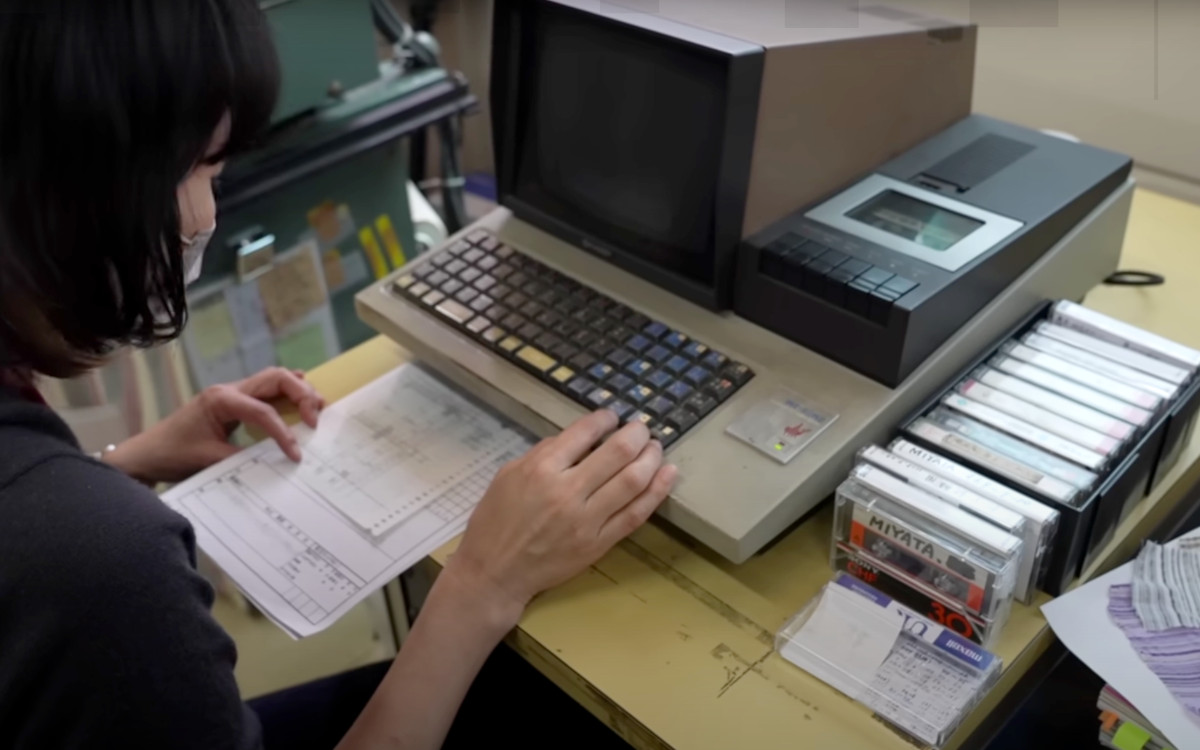In Japan, a clothing company still uses an old Sharp computer. Released in the 80s, the latter is used to produce the punched cards necessary to control the looms. A situation that may seem paradoxical in a country benefiting from very advanced industrial technologies. But it also shows all the complexity of digitizing craftsmanship.
Japan is a country of contrasts. You have the traditional festivals where the Japanese are dressed in kimono. And you have contests of Dance Dance Revolution in the arcades of Akihabara. During the day, workers tie their ties around their necks. And in the evening, they wear it around their heads, in a karaoke party. You have sublime beaches in the Osaka area. And you have great ski areas, like in Nagano where the Winter Olympics were held in 1998.
Read also – Dust off your Atari 2600, the retro console is entitled to a new game!
This contrast is also expressed in companies. Japan is known for its high technological mastery, with brands such as Sony, Sharp, Toshiba or Panasonic. And you have craftsmanship where industrial techniques evolve at a different pace. We want as proof of this a report broadcast on the YouTube channel Process X (and which you can find at the end of this article). The subject of this report: the Japanese factory Miyata Orimono who designs traditional clothing, such as Hantenquilted jackets that Japanese workers, farmers and fishermen have worn for centuries.
A 40-year-old computer is still being used to make clothes
This company makes the clothes by hand, from the yarn that is used to make the fabric, to the final product, including the creation of the patterns. One of the manufacturing steps is based on an old computer that the company has been using for 40 years. On this old machine runs the computer program used to create punched cards. These cards are needed to operate the looms in the factory. Each card allows you to create a fabric with different colors and patterns.
The computer in question is a Sharp MZ-80K2, released in Japan and Europe in the early 80s. Evolution of the MZ-80K released in 1978, this machine includes all the elements to operate: an alphanumeric keyboard, a monochrome monitor, the central unit and a tape drive magnet where the programs are stored. The MZ-80K series supports multiple programming languages and multiple operating systems to be loaded into RAM. These computers were replaced in the 80s by the Sharp X1, then the famous Sharp X68000.
The example of Miyata Orimono shows the dichotomy between craftsmanship, which uses centuries-old techniques, and certain industrial fields which rely on advanced technologies. This computer is kept because it is the only one running the software that controls the machine that makes the punched cards of the looms. This chain (computer, punching machine, loom) ensures maintaining the quality of textile products of the company. If it wants to modernize its production process, then it would jeopardize this quality. Here is another paradox.
